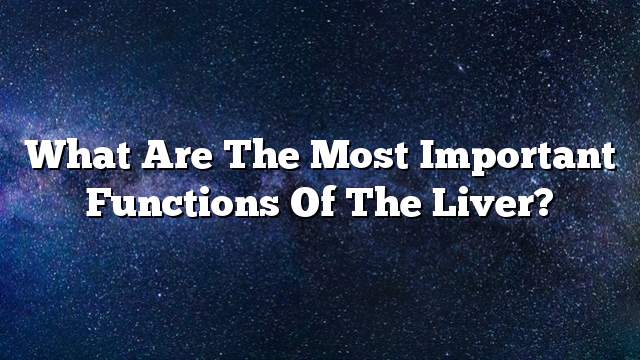The liver is the largest organ in the body and is located at the bottom of the diaphragm in the upper right quadrant of the abdominal cavity. The adult liver weight ranges to approximately 3 pounds and extends from the right rib to the lower border of the rib cage.
The liver is separated to the right and left, separated by the sickle ligament, the right lobe is much larger than the left lobe, and cells are known because of the nature of liver function. Liver cells have a unique ability to reproduce cells and rebuild them in response to liver injury or eradication. Part of it can occur. Reconstruction of a part of the liver can occur after surgical removal of a part of the liver or after injuries that damage parts of the liver. Although the liver can respond to damage and repair its own eye, recurrent injuries can cause liver failure Or die.
The liver is an active member of the metabolism and responsible for many vital and important functions of life, and the basic functions of the liver: –
1 – production and excretion of bile “bile extract”.
2 – bilirubin secretion, cholesterol, hormones, and drugs.
3 – metabolism of fats, proteins and carbohydrates and enzyme activation.
4. Store glycogen, vitamins, and minerals.
5 – the synthesis of plasma proteins, such as albumin and clotting factors.
6 – Detoxification and purification of blood.
As a result of these important activities, the liver is exposed to a number of injuries, and is one of the most vulnerable body members.
Liver and biliary juice “how to transfer”
The bile is composed of bile salts, bilirubin, phosphate lipids, cholesterol, bicarbonate, water, bile salts mixed with fibrillated fats To enhance the absorption of fat in the digestive system, as well as the absorption of bilirubin, cholesterol, and phosphate and end products in the metabolism, and as the need for bicarbonate and water in the digestive system to help By the acids in the stomach, complete digestion and absorption process as require an alkaline environment.
After its formation in the liver, the bile duct flows into the hepatic duct. The hepatic duct works with the bile duct to form the common bile duct, which enters the twelve. When the food enters the gastrointestinal tract and enters the duodenum, colicestocinin is released from the membrane Mucosa to stimulate the contraction of gallbladder and common bile duct, and relax the sphincter, allowing the bile to enter the small intestine.
